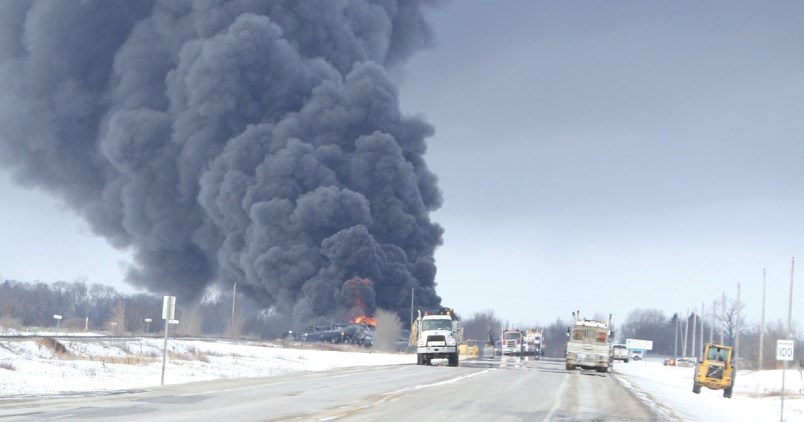GUERNSEY — The suspected cause of two train derailments near Guernsey are broken rails, according to a public letter released by the Transportation Safety Board.
On Dec. 9, 2019, an estimated 1.5 million litres of crude oil was released after a Canadian Pacific train derailed west of Guernsey. On Feb. 6, an estimated 1.6 million litres was released after a derailment east of the hamlet.
In the letter, Dan Holbrook, the acting director of investigations for rail and pipelines, said a review of the locomotive event recorder determined the Feb. 6 train was handled in accordance with regulatory and company requirements, and that no mechanical defects have been found so far on any of the rolling stock that could have caused the derailment.
“A visual inspection of the head-end portion of the train that did not derail was conducted,” Holbrook said.
“On the north side of the train, impact marks were observed on the wheel treads of tank cars located in the 28th, 29th and 31st positions behind the head-end locomotive. The marks observed were consistent with impact that occurs when a wheel tread contacts a broken rail.”
Over the past decade, more trains are hauling crude oil on the Sutherland Subdivision – the stretch of track that goes from Wynyard to Saskatoon. In 2017, CP transported 10,523 tank car loads of petroleum crude oil on that stretch of track, while in 2019, that increased to 77,312.
Holbrook pointed to two similar derailments in 2015 on a stretch of track in Ontario within the Canadian Shield – the Ruel Subdivision – where large volumes of crude oil were released.
“In both cases, amongst other factors, the cause of the derailment was related to either broken joint bars or a broken rail,” he said.
The acting director said the investigations found that Canadian Nation’s safety management system relied on reactive indicators and didn’t anticipate the need for increased track maintenance that came with the increased use of the line.
“Following these derailments, CN made a significant capital investment in the Ruel Subdivision track infrastructure and improved its track inspection and maintenance practices,” Holbrook said, adding that there hasn’t been a significant main track train derailment since March 2015.
Holbrook finished his letter by requesting that Transport Canada consider revising track safety rules to include enhanced track standards for key routes, especially if they face increased traffic and tonnage.




